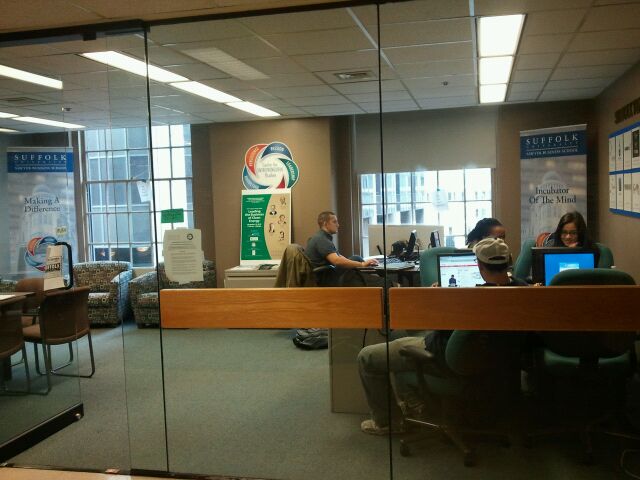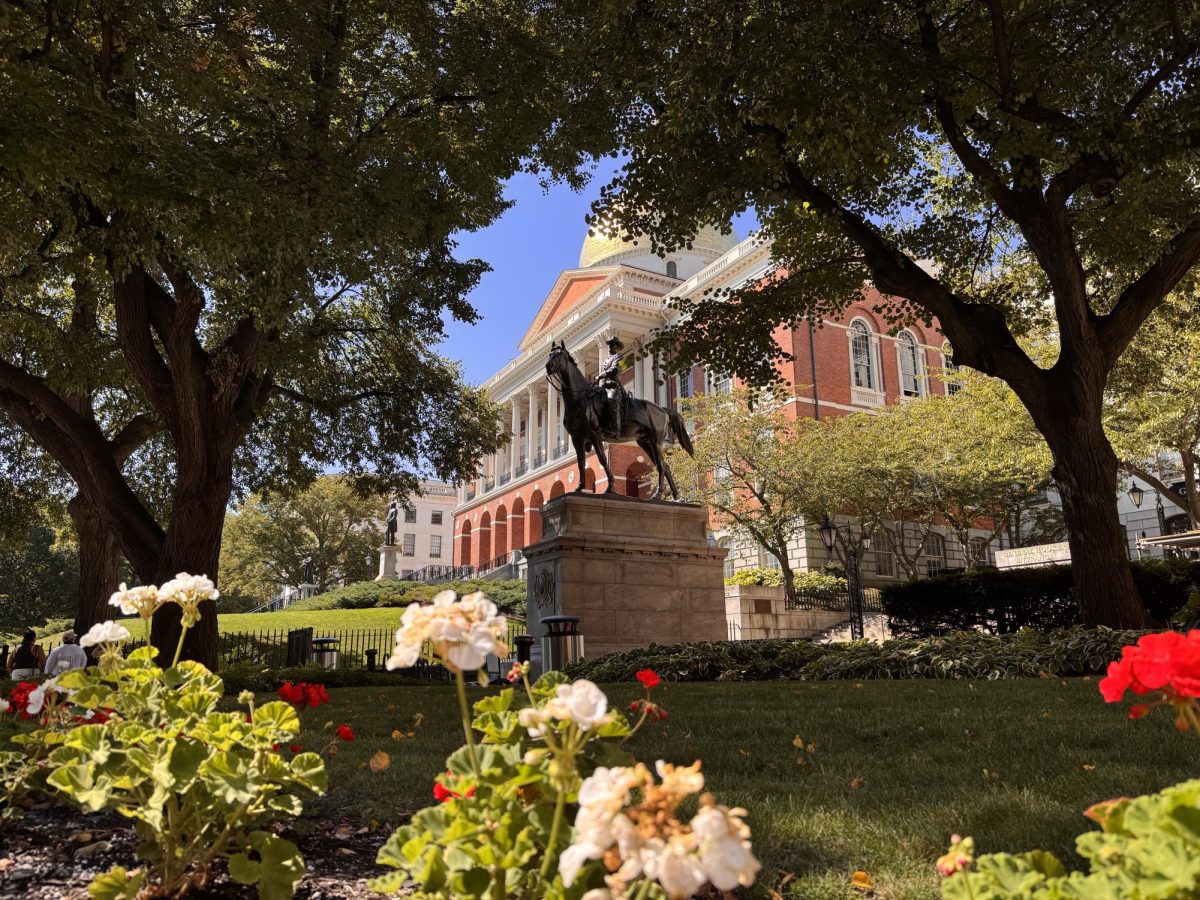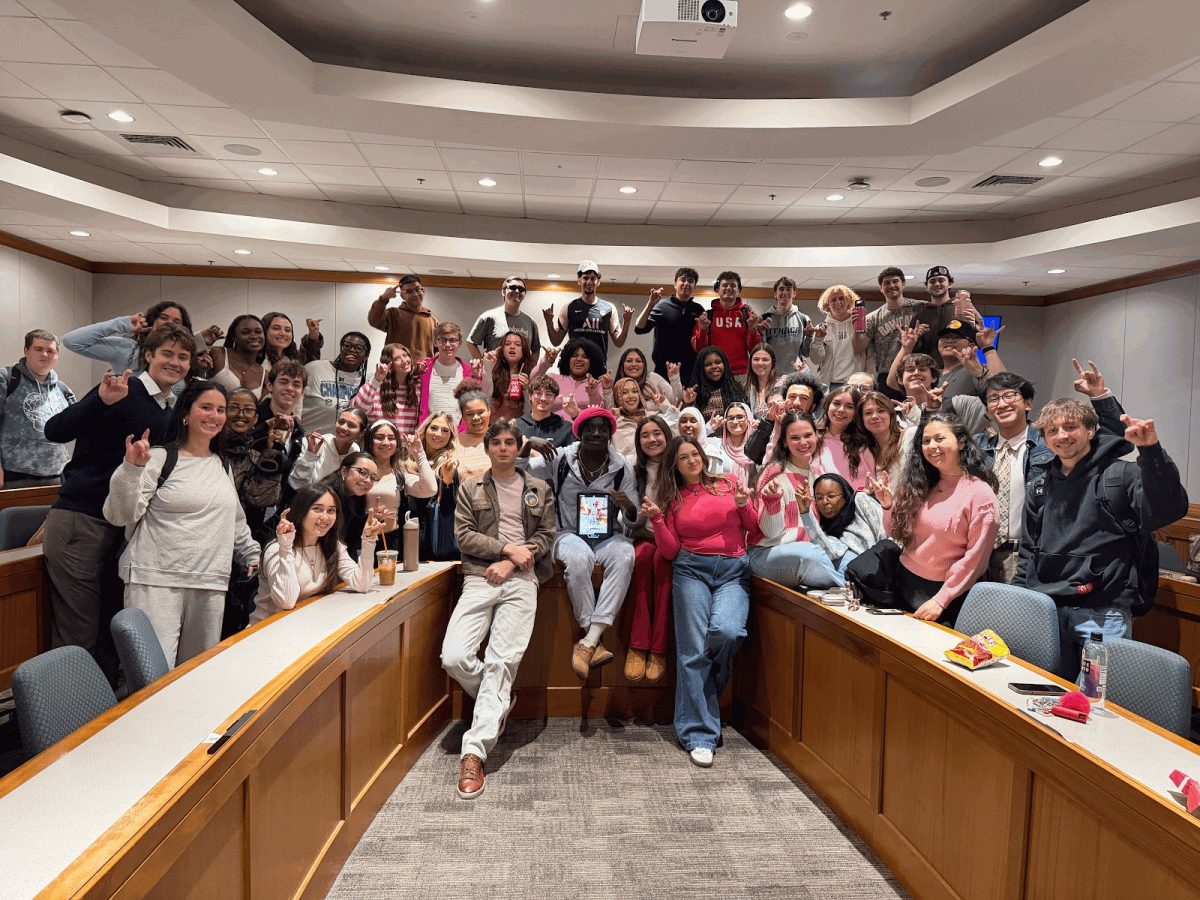Gianna Carchia
Journal Staff
Now open to students, the Sawyer Business School’s Entrepreneurship Resource Center assists those exploring their entrepreneurial futures. Located on the fourth floor of the Sawyer building, the center is outfitted with six computers, all equipped with software designed to provide students with the means to expand upon and launch their business ideas. In addition to its electronic resources, The Resource Center is set up like a conference room with glass walls.
“You can have group meetings here instead of having them in the library where everyone else has them,” said senior Michael Cohen. “There’s always a table to sit at, a desk, and chairs. I’ve been able to have a lot of great meetings with my team members.”
Based on the progress he’s experienced, Cohen expects the business program to grow in popularity. “I’ve seen a lot of change and a lot of growth at Suffolk. I’ve seen it listed in national magazines in the top 25 business schools,” he said. “I know that wherever I am in 20 years, Suffolk will be among the top business schools. I will be proud to say I’m a very happy alumnus. They’ve shot up the ladder since I’ve been a freshman.”
The entrepreneurship program was founded in 2003 and has increased to support 450 students, with 800 students passing through its classrooms.
“I have a couple different ideas, and the professors are always there when I have a question,” Cohen said while working on an individual project in the resource center.
George Moker, director of Entrepreneurship Programs and instructor of Management and Entrepreneurship at Suffolk, is one of the main contributors to the resource center. “It was one of my ideas to help create a Suffolk entrepreneurship community and to give them a place to launch ideas on new businesses,” Moker said. “The new Entrepreneurship Resource Center gives the program a physical presence. There are 250 students in the entrepreneurship program. About 50 students a week use the center, but we’re expecting more once we install the new software that will provide tools for launching new companies.”
The new software will help students with brainstorming, business planning, 3D imaging, and product development. Having such resources in an area focused on the advancement of their future success is valuable for the students at Suffolk, but it is his hope that they will eventually reach outside the University’s walls.
“Our goal is to increase space significantly to provide resources for all majors and to reach into the community to help entrepreneurs with businesses in the city,” says Moker. “It’s about economic development and social re sponsibility. It’s internal, but it will grow in terms of size and space to connect the University with the community.”
“We have a living learning community in 10 West that are all entrepreneur majors, and there’s a strong relationship between undergraduates, graduates, and alumni,” said Moker. “Suffolk alumni have hired Suffolk students…we’re trying to create a Suffolk Entrepreneurial community.”
In order to provide students with the support that they need, Moker said the faculty rotates their hours so that there is always somebody available for assistance.
The students take care of a lot of the work on their own, a quality made even more possible by the new resource center and its access to a boardroom environment and motivating new software.
“[The students] have a lot of fun, there’s a sense of excitement,” said Moker. “There’s always a buzz in the hallway. When we give students the chance to realize their dreams, the sky is the limit.”
For students interested in launching their own business, the center is an extremely valuable resource to have, and Suffolk’s faculty is passionate about its establishment.
“It’s a lot of fun,” Moker said. “We are a start-up. We’re a fun, exciting, successful start-up.”








